
Untitled, 2016, still image from video “The Finale, Fall ‘16” by Austin Thomasson and Dæ Ja
The project has taken place twice a year in Seyðisfjörður, Iceland since 2014 and will continue for an unknown number of years. Each performance has a duration of exactly 84 days. Two performances will take place in 2018:
Winter/Spring: 7th of January – 31st of March.
Fall: 24th of September – 15th of December.
The LungA School is an entity staging its own existence.
Names of all participants will be announced during the unfolding of the performances.
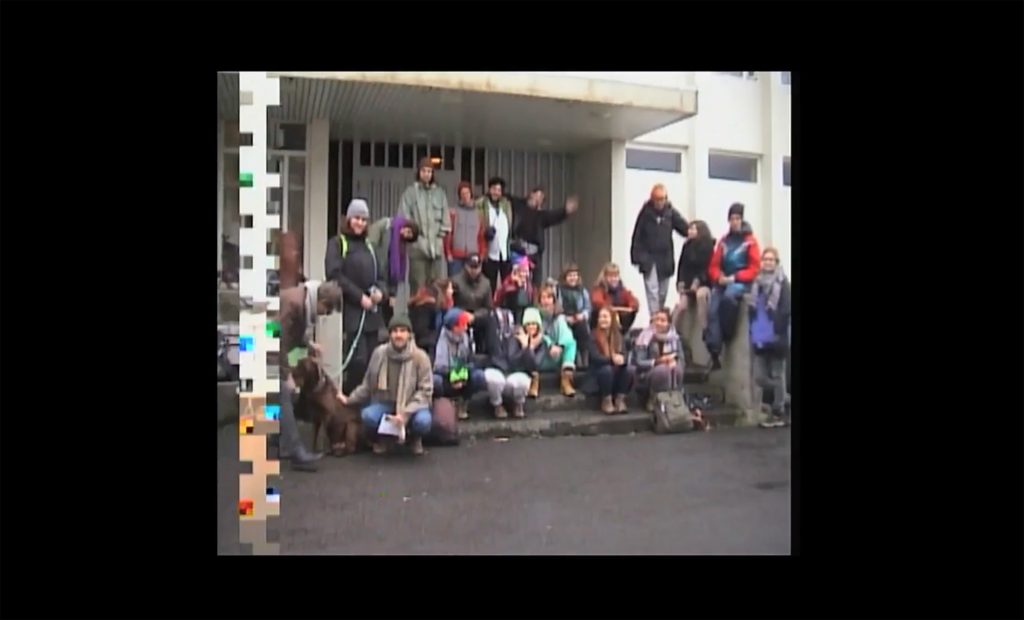
Untitled, 2016, still image from video “The Finale, Fall ‘16” by Austin Thomasson and Dæ Ja
ORIGIN
People meet and things happen. And the other way around. It is strangely heart-warming that most stories can be boiled down to this.
The LungA School was an idea that arose out of a number of circumstances and as the rather surprising result of a meeting between a place and a community.
Seyðisfjörður. It is unknown how this town got its name, partly because it is unknown what it actually means. It could mean something along the lines of ‘the mysterious mist between the mountains’, but this would just be a guess. A more qualified suggestion is that Seyðis is a word that comes from the Sami word ’Sieidis’ which means a sacred place that was worshipped as a gateway to the spirit world. A magical place, so to speak. Another suggestion is that it comes from the Old Norse word ’seid’ which is one of two words that were used to describe magic as it was carried out by the few that possessed these powers, the powers to bridge the world of the gods with the world of men. Both seem quite fitting once you know the place.
This is the place, with its unpredictable currents, where all the streams and rivers meet before they rush into the ocean. This is where we are.
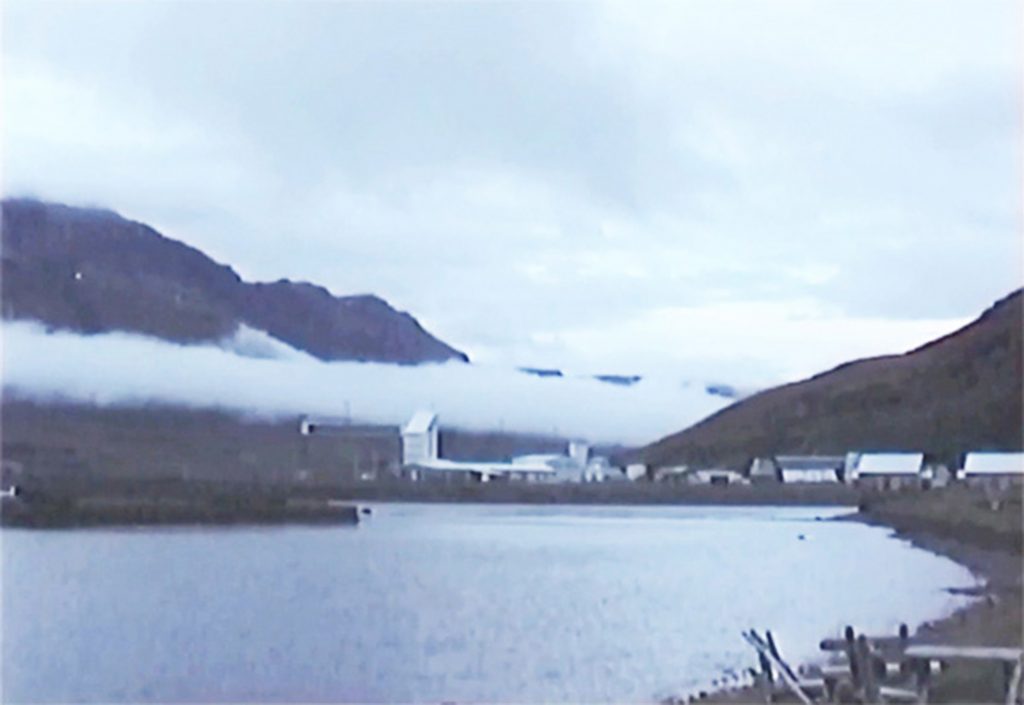
Untitled, 2016, still image from video “The Beginning, Fall ‘16” by Austin Thomasson and Dæ Ja
AN INTRODUCTION
Three years ago we started an artistic, educational experiment here in town. An artist-led (and student-led) international art school that exist both as a school and as an ongoing act of art in itself.
Our ambition has been from the beginning to create and foster environments for artistic praxis as a conscious, social praxis of generating culture.
Ambiguous, multi-natured creations and situations that are both instruments and performers, objects and actors, everything at once.
In order for it to be a good school we must see it as a work of art, and in order for it to be a good work of art we must see it as a school.
The school has become and is still becoming. And in this process of becoming it is not only transforming itself and being transformed, it is also radically altering it’s own foundation as well as everyone involved. Seyðisfjörður is not the same. Participants do not remain the same. We are certainly not the same. And the school has never been anything other than these constant transformations, this living activity which escapes definition in order to be alive.
Currently we have 16 participants from all over the world for every iteration so it is, intentionally, a small school. Besides the participants we have a number of international artists who enter the situation as guests for shorter periods of time.
Currently the performance is 84 days and therefore simply called ’84’:
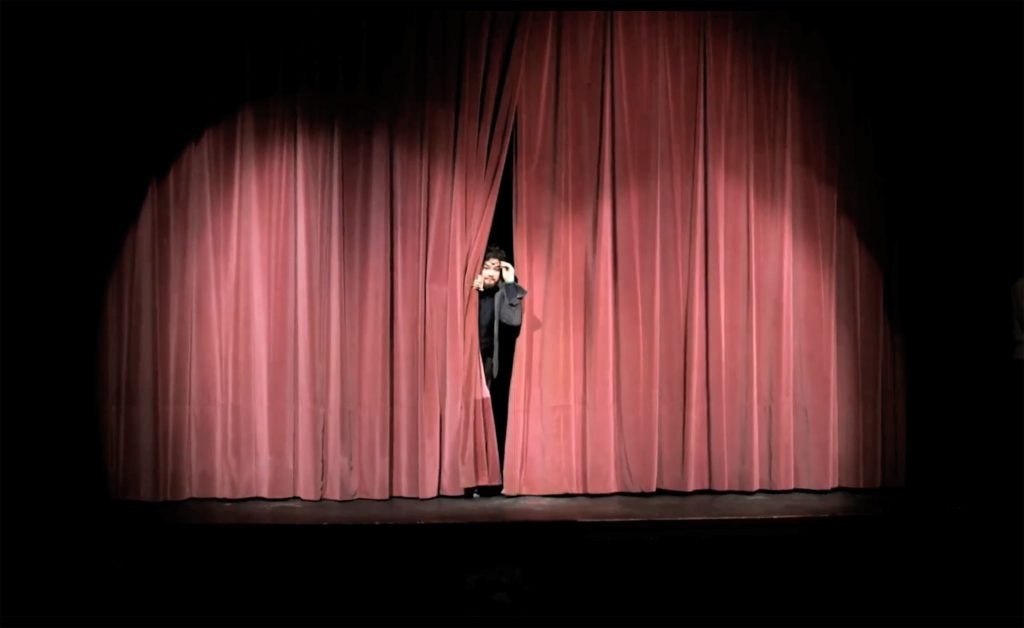
Untitled, 2016, still image from video “The Finale, Fall ‘16” by Austin Thomasson and Dæ Ja
’84’ is the name given to a period of time which can be characterized as being something in between an act of art and a school and neither and both and more.
’84’ is a composition for a performance. The performance of a school. Or: The performance as a school. Or: The school, performed.
The score consist of both a text-based manifesto and a visual part. Two documents in one that makes up the score, but, of course, not the music.
The score informs the music which again informs the score.
In the beginning, however, there was just the music. We started a situation which now has a bit of language, a very fluid language that is still becoming and changing all the time.
The words I am writing now have grown out of this situation. The situation does not come from these words. The word was not there in the beginning. But without the words, there was just something happening.
The thing that happens here is essentially unrepresentable. Multiple layers makes it so: factors such as the number of students, the size of the area where things are happening, the timescale, the shared meaning and understanding that arises internally in the group over time with it’s own esoteric language etc.
The premise is this: Everything that takes place in those 84 days is part of it. There is no escape neither in space nor time. Therefore, everything that happens draws threads all the way through the program and is therefore not completely over until the whole thing is over. It becomes dense like a star that hurts to look at. It’s simply too much to try and grasp it all.
And even when it is over, it still exists as something else.
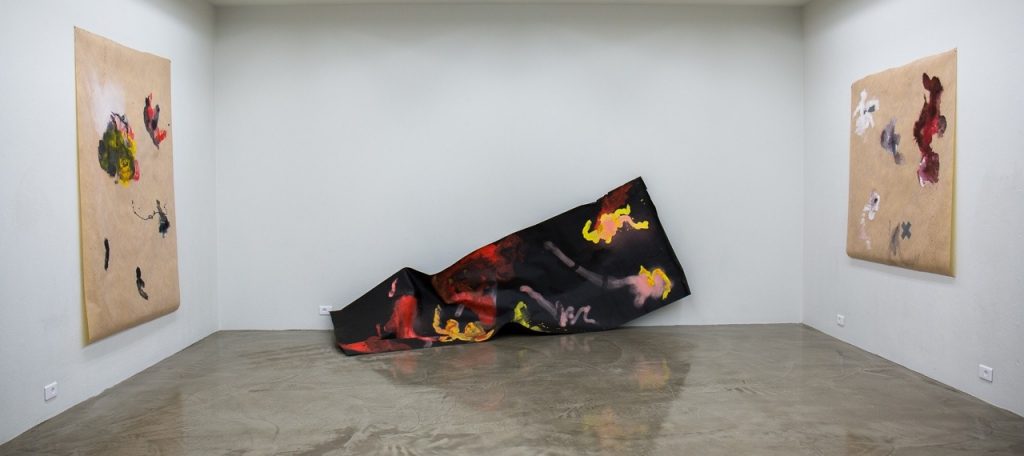
05_Untitled, 2017, works by Alba Liv Hansen, photo by Amal Khan
Teaching and learning as artistic practice:
A manifesto for the LungA School
The school is only there when the school is there.
And these words will only get us so far.
And that’s fine.
I
The impossibility of describing a thing fully from one perspective.
II
Four voices are not all, but are enough to create an image, an outline that is not solid, but not dissolving.
III
Four texts being read as one.
Four texts to be read simultaneously.
IV
Our futile attempts at describing this school have compelled us to write these texts. They take on various perspectives, various lenses, various languages. All of them touch upon what this place is. All of them fail to describe it completely.
SCHOOL AS AN ACT OF ART
I
This school is to be approached as an act of art. This school is also a fully functioning school. That, in this case, is the same thing. What we mean by that refers to the purpose of the school and how it unfolds. Teaching and learning here is a performative practice, a lived practice that unfolds unpredictably. Here the skin becomes softer, becomes thinner, becomes stronger. In a world that constantly and uncomfortably reminds us that we have forgotten how to be human, we catch glimpses of what it means to live.
Perhaps it is not a good idea to call a school an act of art. Perhaps we condemn a school to irrelevance by calling it an act of art, because Art has become so thoroughly disconnected from most people’s lives (or is it the other way around?). But perhaps by calling a school an act of art, we open it up, disclose its deeper nature, and it becomes visible and understandable.
II
An act of art is the unfolding of an artistic practice. An artistic practice is a certain way of being with materials in all their abstract forms. This way of being with materials is characterized by openness towards the potential of an interaction between you and these materials, and an awareness that this interaction has the power to transform you while you transform the material.
Experiencing an act of art is not about understanding a theoretical discourse on abstract matters, it is about engaging in an ethical and aesthetical discourse on daily life as practice.
An act of art is to be looked upon aesthetically, meaning for the sake of what it might open up when experienced. The LungA School is created for the sake of the possibility of opening up the experience of living while and through engaging in artistic practice.
There is no beginning and there is no end to this act. The purpose is life, therefore, the purpose is art.
III
Do schools today have more transformative potential than art? If any sort of transformative potential rests partly on the openness of the person who experiences, then, we have to ask whether there is more aesthetic openness when engaging in education than when engaging with art.
Even though most schools can hardly be considered as places for education anymore, but rather, as instruments in a system of production, there is still a philosophical foundation for understanding education as being a process wherein an individual’s spiritual and cultural sensibilities, as well as personal and social abilities and attitudes, are in a process of continous expansion and growth. This notion of the goodness of education in and for itself serves as a reason for the openness that still exists towards schools from the general public. An openness that does not, in the same way, exist towards art.
However, this argument does not mean that we cannot consider a school an act of art, merely that, when doing so, we run the risk of changing the disposition that the students have towards the place when they enter a program. But it seems that there are essential parts of the school’s nature that can only be explained through this logic and discourse, and not using it would mean a loss of aesthetic potential.
Even the act of using this kind of language to describe the school partly reveals its nature, as the nature of anything is best understood by considering it’s actions.
IV
If an act of art is considered that which is performed for the sake of aesthetic appraisal, then making decisions becomes subject to aesthetic consideration; what kind of decision can be regarded as aesthetically interesting, and thus, potentially open up for a broader understanding that enriches experience?
A decision does not have to be logical to be good.
As we consider artistic transformative practice as that which charges into unknown territories, it cannot rely on established knowledge. It must follow the sense of truth that comes from a connection with the accumulated wisdom of a lived life manifested as intuition and will. And this is something that can be cultivated and refined.
Another element is the consideration towards the manner in which things are done. If we consider the work of art as not merely an artifact that is something in itself, but also as the accumulation of decisions and actions, it becomes clear that any work of art is simultaneously it’s own process. Similarly, if the school is considered an act of art, it too is engaged in a process of constantly becoming.
So we are not just faced with the questions of what a good decision or action might be, but also the question of what way to go about performing an action, or which way to talk about a situation. Art is not a charade; therefore, our decisions and actions cannot be either.
If art is to be connected to daily life, we must relate appropriately to the actual things that occur.
What we are inviting everyone into is, essentially, circumstances where things can occur and, what then occurs determines where we go next.
V
A program here is a composition, a set of arranged circumstances, notes on a string. Each note is in its right place, which could be any place, but then again, it could not. It is where it is. These circumstances have a beginning, but each of them unfold in largely unpredictable ways, filling out the empty space between the notes, creating a totality in the performance of a composition. And each performance is different from the other, though it is easy to recognize the composition as being a particular composition and not some other.
We are conscious while we surrender to unfamiliar logics.
VI
We abandon the formal qualities of artistic practice and let it sieve through our bodies, into all aspects of our lives, so our ‘practice’ becomes something more than where our works of art are created. Our practice reveals the blurred lines between our making and life.
School, an act of art.
Teaching, an act of art
Learning, an act of art.
Lives, acts of art.
SCHOOL AS ANARCHIST PRACTICE
Anarchism: the name given to a principle or theory of life and conduct under which society is conceived without government—harmony in such a society being obtained, not by submission to law, or by obedience to any authority, but by free agreements concluded between the various groups and individuals, freely constituted for the sake of generating culture that serves the pursuit of the multitude of purposes that exist within the range of humanity.
I
When talking about anarchist practices in relation to a school, we are talking about those ethical practices that relate to daily life, to a life where decisions are taken amongst members of a community relating to the particular instances within which they are being taken. These are related to practices that are not governed by universal ideas but by what we will call particularist ethics.
We are against rigid policy as ‘the way’ things must be done and instead insist on looking at every instance, every situation, every relation as something new, while naturally considering experiences through time. Relating to situations in this way does not mean forgetting history, but rather embracing past and present history and embracing the uniqueness of every situation.
II
We are searching for ways of living that make sense. And this we have to find out for ourselves, all of us. Our thinking on the matter can only take us so far, so we will have to figure out what it looks like and what it feels like by engaging in it, by engaging in life.
We are trying and failing and trying and failing.
We will never succeed in finding ‘A Way’. The way changes along the way. So, we will let go of our longing for eternal answers to what makes a good life, and instead we will live and keep going ‘till we get it right and then continue, knowing that it will have to be created anew every instant.
We do not try to create theories to live by, but we do try to theorize our actions so as to understand them properly. Not in order to reproduce them and to frame our lives by them, but in order to have them visible, so we can move with them when it makes sense, and move beyond them when that is called for.
III
These kinds of anarchist practices belong to communities of human scale.
Therefore, we are and will always be a small school, a small community. In order to properly, radically engage in a lived inquiry into the question of how to live together.
IV
Can we imagine a liquid terminology?
We are trapped by our own language and the lenses through which we feed our imagination. Perhaps only by dissolving our “truths” and sustaining them in a liquid state will we reimagine new ways for experiencing and existing.
There are terms that take on different meanings under different circumstances and situations, but in a particular field, their meaning is locked and holds everything in a state of pretense-equilibrium.
What we are suggesting here is not meaninglessness, and certainly not relativism, but the acceptance of the impossibility of universality in terminology and understanding. We pursue a way of looking at the world that sees every situation as truly it’s own, requiring consideration upon consideration without letting any universals establish themselves.
It is within the particular that we experience, that we feel, that we sense; and it must be here where we also make sense.
Uncertainty requires a collapse of understanding. A collapse that seems to be happening all around us, whether we want it or not. We can embrace this collapse and start listening and doing attentively, which includes both risks and possibilities. Risk of doubt and uncertainty, and possibilities for opening up to otherness within and without.
V
Anarchist practices create distance from established practices, but do not remove themselves completely from existing frames, rather they exist within them. We do not try to establish a utopian life outside the world, but strive to make a good life in the world.
Anarchism is the kind of practice that both allows and nurtures the individual in assuming the responsibility that comes with being alive as a being amongst other beings. Therefore, the most revolutionary practice must be engaged with making this existence visible and felt, with creating ways through which it can be acted upon.
VI
Our aim is to enable a community to pursue the multitude of purposes that exist within the range of humanity. A community in which the possibility exists to live out various conceptions of a good life is not a community that is held together by compromises. Rather, it is a community in which all members take into consideration all the others as well as themselves, and where ones actions are guided by the total understanding of ones situation. As a starting point we assume each others’ consideration and humbly accept that one can never grasp the full consequence of ones own actions.
THE ART SCHOOL
I
Studying art means surrounding yourself with art and artists, and a conversation on art making and artistic practice. Materials and mediums are everywhere around us, as we live our lives. All situations are simultaneously their form and their potential forms.
Studying art is developing an interest in everything around you.
Studying art is not an academic venture.
Studying art is a sustained activity no different from doing art. It is the cultivation of an artistic sensibility, an artistic language (language understood here as a way of engaging with our surroundings) that becomes part of one’s being.
Our foundation for art making is exactly this cultivated language that allows artists to engage in conversation with all the visible and invisible materials that make up their inner and outer life, that make up the experience of life.
II
Artistic life is a life of creation. It is a life in which we are constantly in the process of collecting, conversing, and experimenting. Artistic life is this process and not the works that come from it. The works are snapshots released during this process. They are creations that carry this process within them, while also being things in their own right, to be experienced for their own sake.
Every activity is a conversation.
In artistic life, you never know what to do before doing it. Knowing what to do before starting amounts to a muting of the conversation, an estrangement from the world. Artistic life is a way of being in the world that is in itself an opening up to the world while creating it.
III
Art is not about expression either of oneself or of an idea. Art is not about something.
Art is something. It is not a discourse about abstractions; it is the giving of form to, and living out of, particulars.
IV
Art can only be when it insists on its own uselessness and meaninglessness. Only then can it become meaningful and useful. Only when it reflects and emphasizes (not through process, form, or content but as a whole) the immediate existence of the observer in the world does it point towards assuming the responsibility that comes with being in the world.
The responsibility of artists is to insist on being useless, to simply insist on the realization of their art.
V
Contemporary art education must become an integrated, conscious, social practice of creating environments of experimentation while at the same time dissolving the boundaries of the institution. Art is not a spectacle removed from the viewer, but an integrated experience of the lives we live.
The artist serves a purpose in society not merely by what they produce, but by the way they practice and exist. In this way, the artistic practice is blurring the lines between life and art and breaks down the barriers of the art institutions and transform them into truly cultural institutions that works with the conscious creation of culture through artistic practice.
Here, teaching and learning becomes performative practices that calls for aesthetic appreciation, consideration and alteration.
VI
Studying art weaves a web of questions that forces us to remain conscious.
Studying art does not provide any answers.
ON AN ART OF LIVING
I
As a human being you need to make a living (not to be confused with making money) which means that you have to engage in activities that sustain your own life as well as the people around and the ones dependent on you. However, logically, the question of making a living only makes sense after the question of ‘why’ has been addressed. Naturally, we have to be alive to even ask that question so chronologically we have to make a living before addressing the question of why.
Ultimately, and practically, this means that these two questions, how to make a living? and why even live?, exist simultaneously and we realize that the questions are very much related, though not entirely the same thing.
Sustaining one’s life must be put in service of living the kind of life that makes sense to live and can never be a purpose in itself.
School is a space outside of the system of production and instrumentalization. A place constituted for the sake of wondering about ways of living, about reasons for living and a place for abstract experimentation on these questions, seeking ways that make sense. And the path of experimentation is neither linear nor logical.
In a sense, schools are preparation for life, but in the same breath it needs to be said that schools do not take place outside of life and therefore must also, in themselves, constitute a way of life. They must serve as examples and everyone involved as exemplars of living consciously with these questions.
II
The school must be an interplay between structure and anti-structure, not meaning the opposite of structure but that which, when coming in contact with structure, dissolves both. The structure is concerned with cultivating perception and actions while anti-structure comes from an attitude of openness and attention towards the particular moments. The tension between the two reveals the potentials that exist in any given situation.
The larger aim of schools must be to enable students to carry forward this interplay between structure and anti-structure and their art of living after leaving the school.
III
An art of living is concerned with altering the questions we normally ask and address the life you live as the fundamental practice of any artist, the foundation upon which everything you do takes place. It is upon this foundation that one’s life can be structured in accordance with those things that are worth striving for.
Life being in service of art while art (the conscious curation and production of culture) being the way of, and purpose for, life.
How can one make a living through living artistically?
IV
When we look around us we see the dominating instrumental and economic logic and discourse turning everything into means. The ends we seek are abstractions we look for in the mirror. But you can never be the purpose of you own life without turning everything and everyone else into instruments.
Introspection and cultivation of oneself can only take place for the sake of qualifying one’s presence and devotion to something that is outside of oneself.
Who and what are we something for?
V
Living is an activity to be felt. Only if things matter can they be felt. An art of living is a surrendering of cynicism, irony and the prejudices of modernity in favor of letting things matter in themselves and for their own sake.
VI
An art of living, being concerned partly with making a living, should be treated with the same artistic attention as any process of making. Our thoughts are bend from the object and back onto ourselves.
STRUCTURE
And so we get to the problem of structure.
The program ’84’ moves through different stages. These are characterized by a difference in language, a difference in content and a difference in focus, but also by a similarity which allows for several cycles to occur during the program and several opportunities to revisit an idea or a medium in order to experience the changes in perception that occurs over time.
The stages occur chronologically, but are overlapping and seamlessly woven together so that the journey through them becomes one continuous movement.
The problem of engaging with the multiple levels of consideration that lies in each little detail of the program led us to the decision of creating the program as composition.
What follows is a graphic score detailing this particular program. The score has been created from a basis of six structural spaces:
the collective
the individual
the active/effective
the reflective
the invasive/disruptive
the formally informal
These six spaces constitute the programmed space. The empty space in between is where everything slowly becomes something. The structure exists for the sake of the uncontrollable and unpredictable life that unfolds in between it’s elements.
The graphic score speaks multiple languages simultaneously. The elements of the composition reflects the particular content while the graphic expression speaks to the nature of the intention.
 Paragraph 1, 2016, from “Teaching and learning as artistic practice: A manifesto for the LungA School
Paragraph 1, 2016, from “Teaching and learning as artistic practice: A manifesto for the LungA School
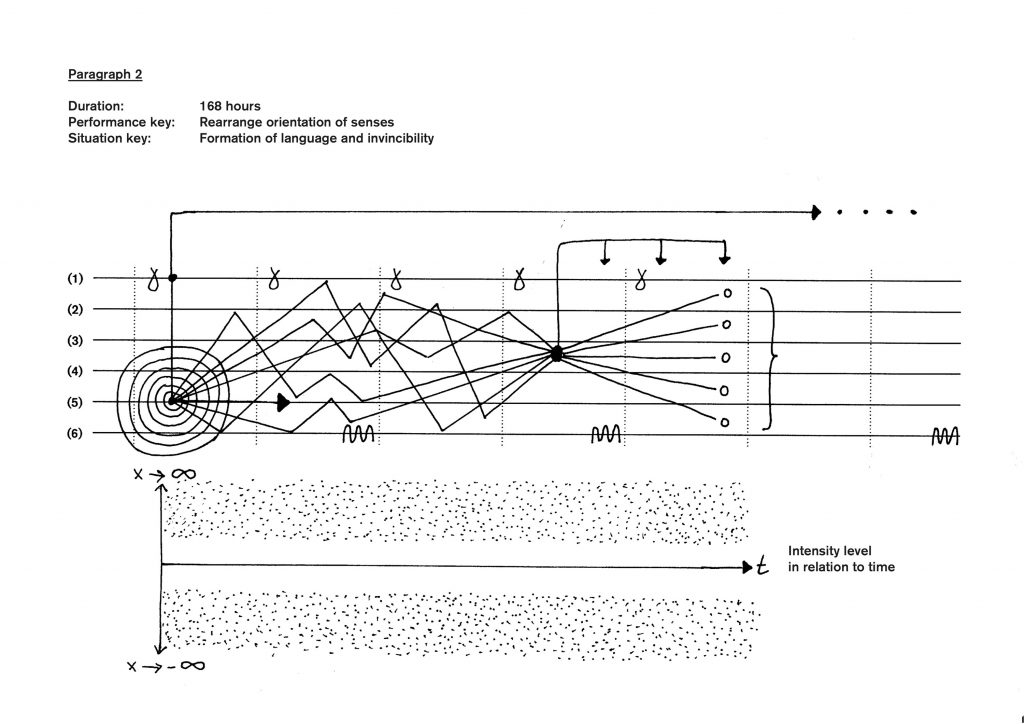 Paragraph 2, 2016, from “Teaching and learning as artistic practice: A manifesto for the LungA School
Paragraph 2, 2016, from “Teaching and learning as artistic practice: A manifesto for the LungA School
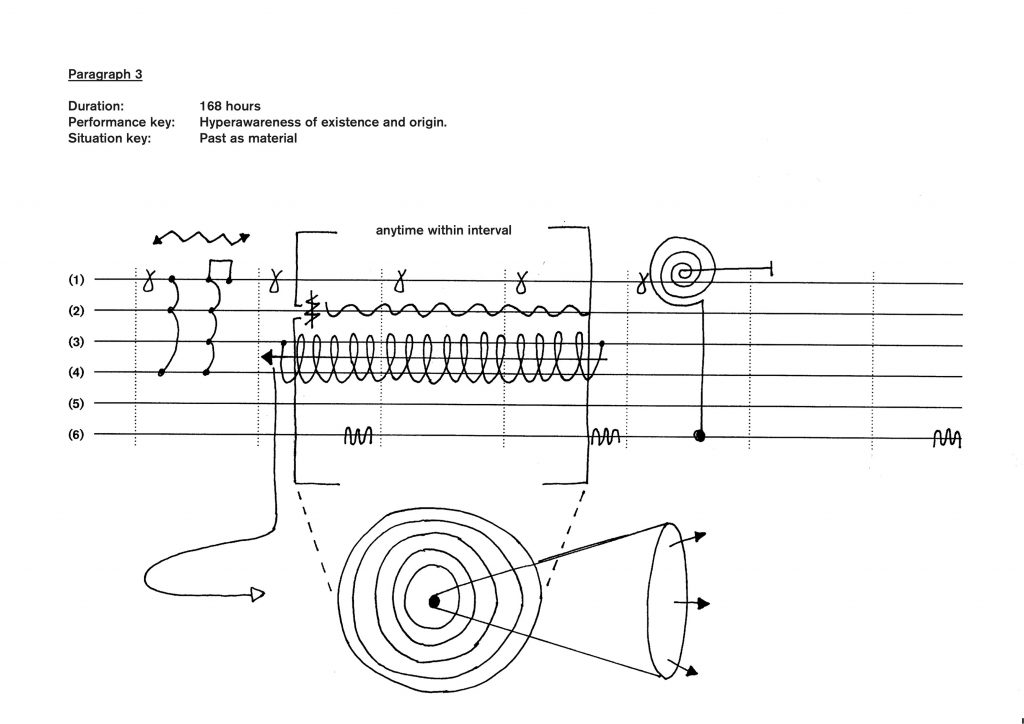 Paragraph 3, 2016, from “Teaching and learning as artistic practice: A manifesto for the LungA School
Paragraph 3, 2016, from “Teaching and learning as artistic practice: A manifesto for the LungA School
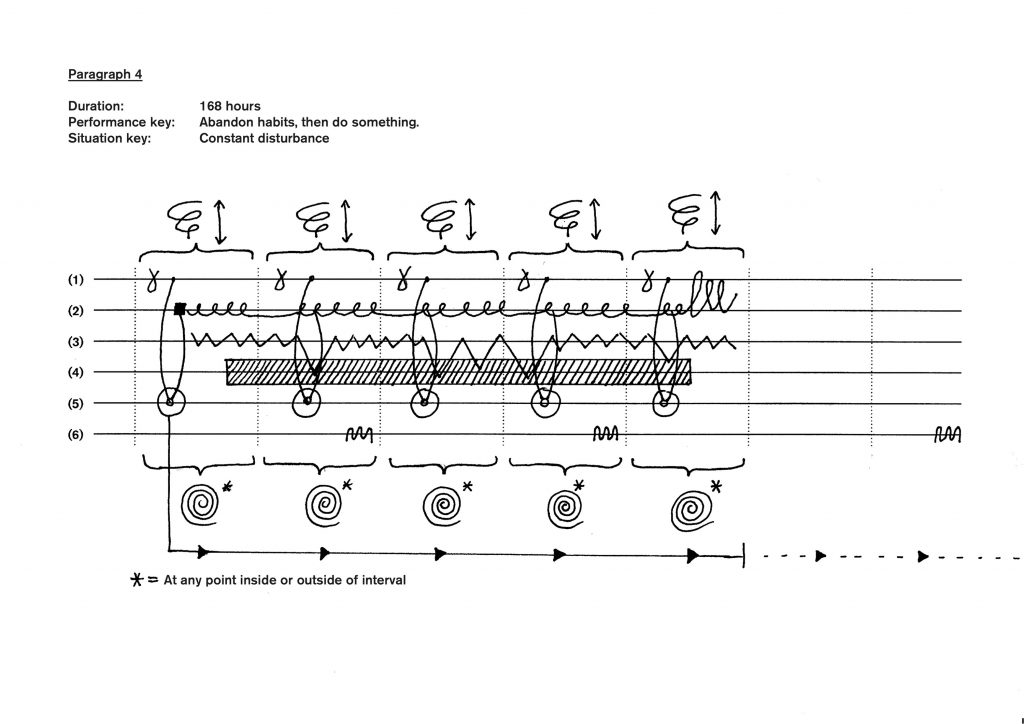 Paragraph 4, 2016, from “Teaching and learning as artistic practice: A manifesto for the LungA School
Paragraph 4, 2016, from “Teaching and learning as artistic practice: A manifesto for the LungA School
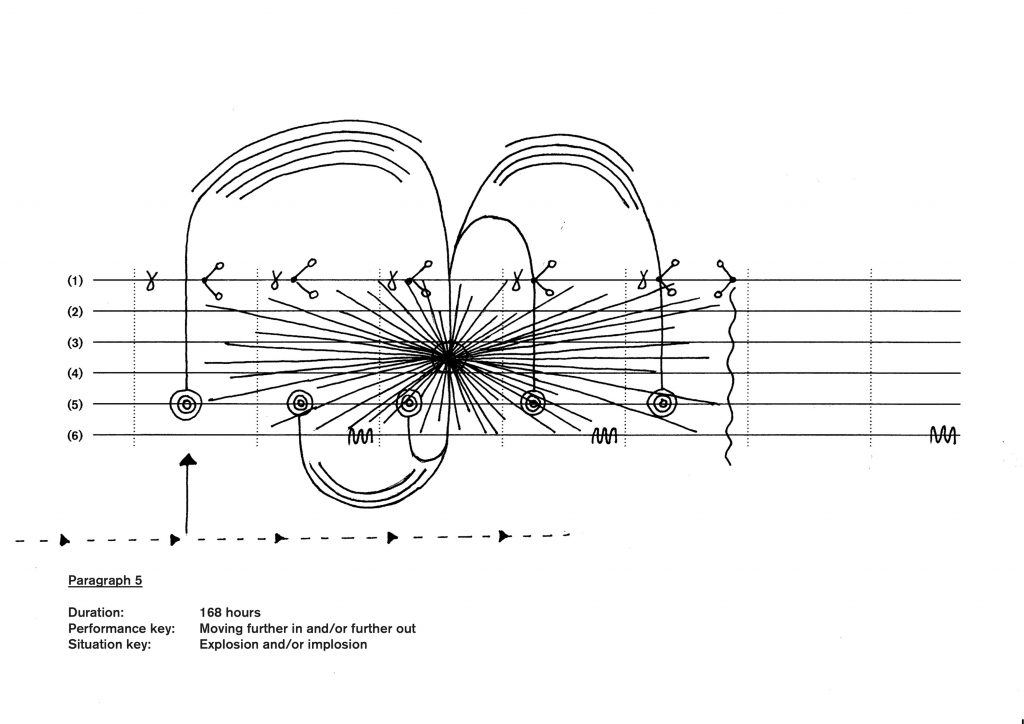 Paragraph 5, 2016, from “Teaching and learning as artistic practice: A manifesto for the LungA School
Paragraph 5, 2016, from “Teaching and learning as artistic practice: A manifesto for the LungA School
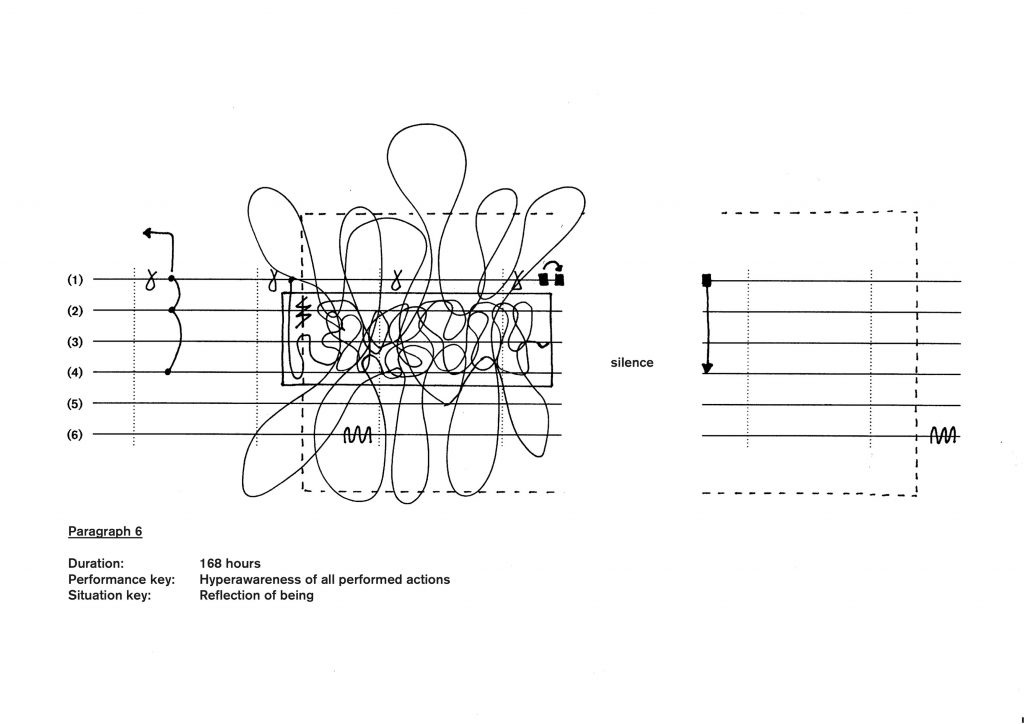 Paragraph 6, 2016, from “Teaching and learning as artistic practice: A manifesto for the LungA School
Paragraph 6, 2016, from “Teaching and learning as artistic practice: A manifesto for the LungA School
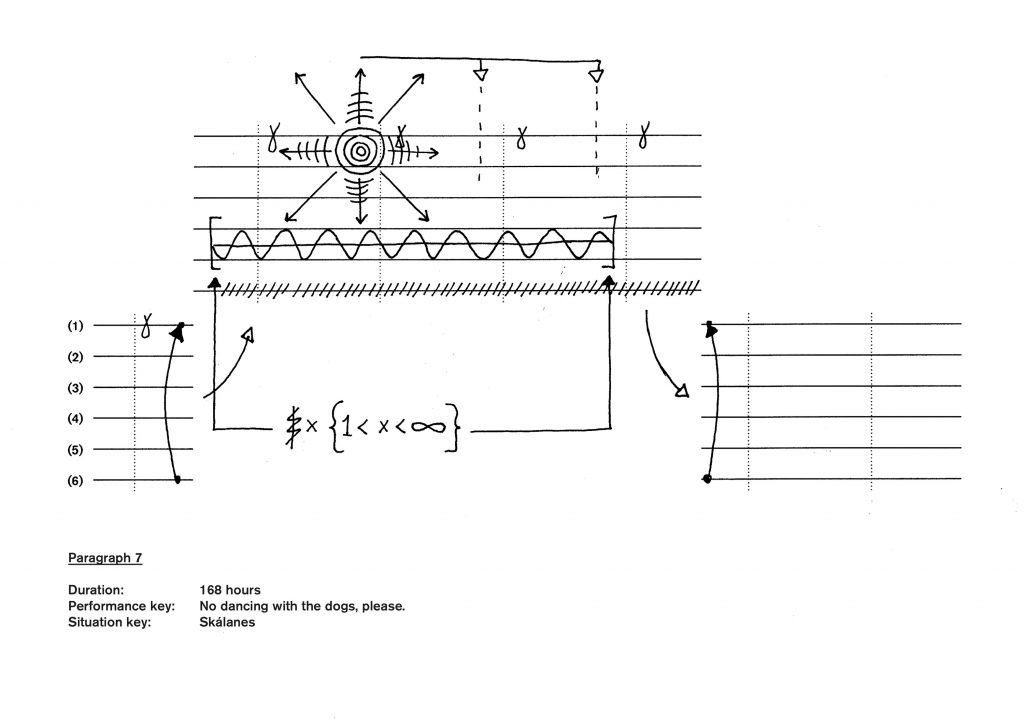 Paragraph 7, 2016, from “Teaching and learning as artistic practice: A manifesto for the LungA School
Paragraph 7, 2016, from “Teaching and learning as artistic practice: A manifesto for the LungA School
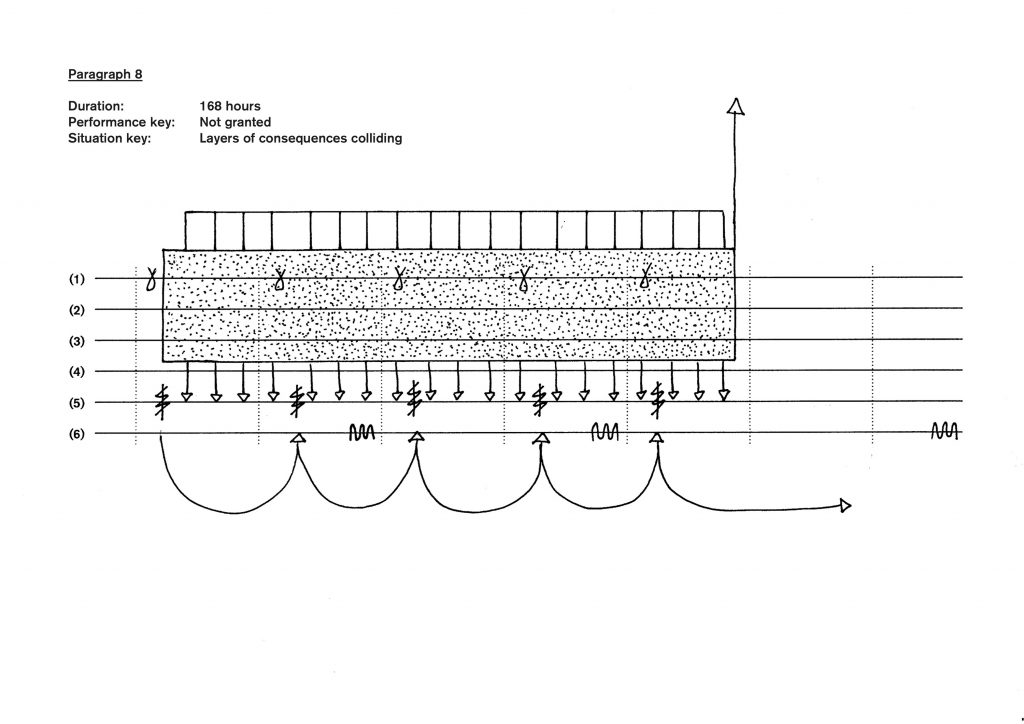 Paragraph 8, 2016, from “Teaching and learning as artistic practice: A manifesto for the LungA School
Paragraph 8, 2016, from “Teaching and learning as artistic practice: A manifesto for the LungA School
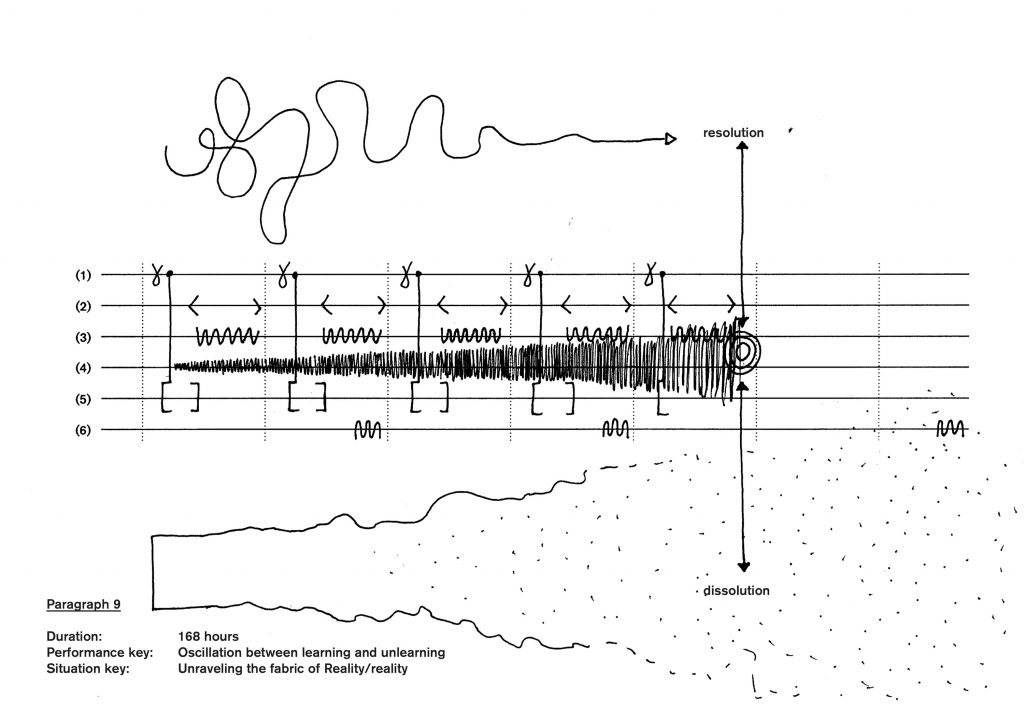 Paragraph 9, 2016, from “Teaching and learning as artistic practice: A manifesto for the LungA School
Paragraph 9, 2016, from “Teaching and learning as artistic practice: A manifesto for the LungA School
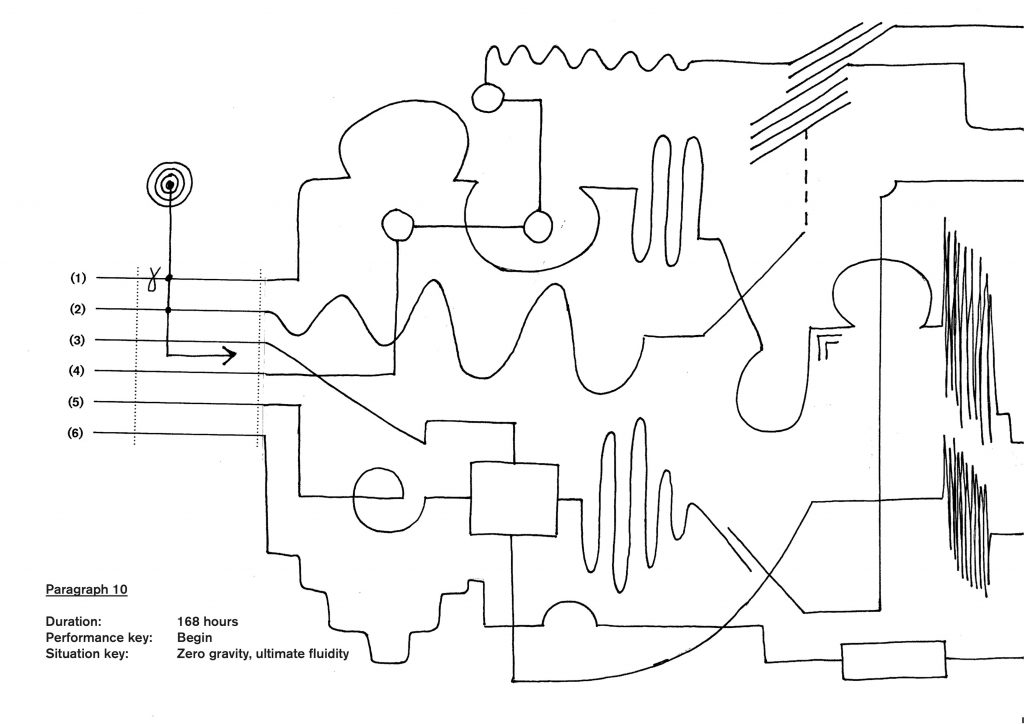 Paragraph 10, 2016, from “Teaching and learning as artistic practice: A manifesto for the LungA School
Paragraph 10, 2016, from “Teaching and learning as artistic practice: A manifesto for the LungA School
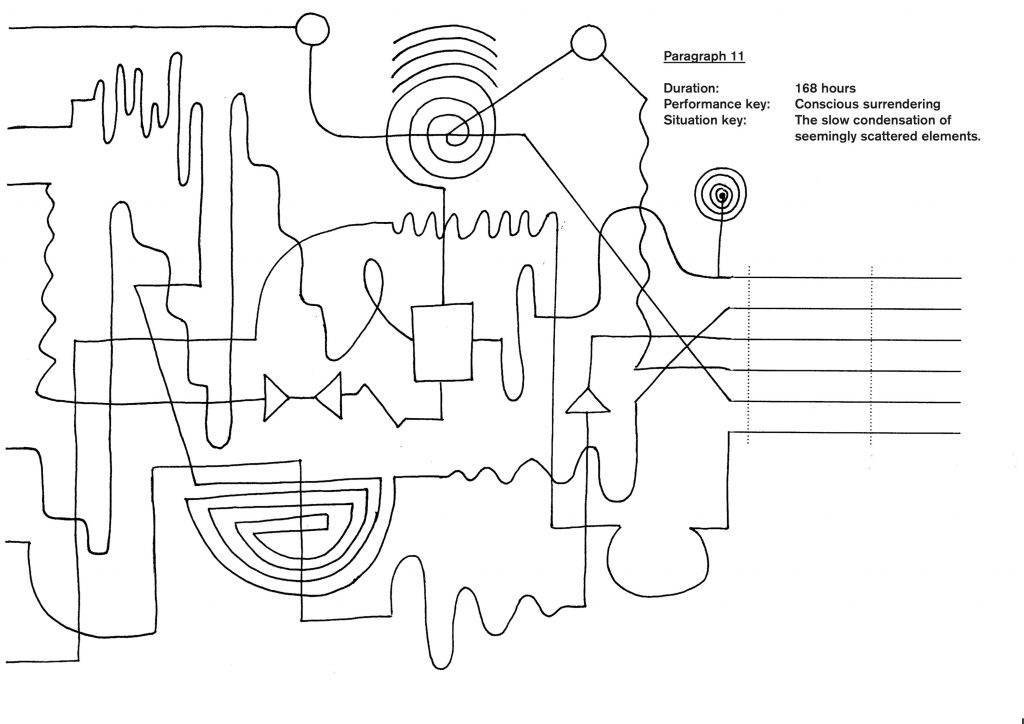 Paragraph 11, 2016, from “Teaching and learning as artistic practice: A manifesto for the LungA School
Paragraph 11, 2016, from “Teaching and learning as artistic practice: A manifesto for the LungA School
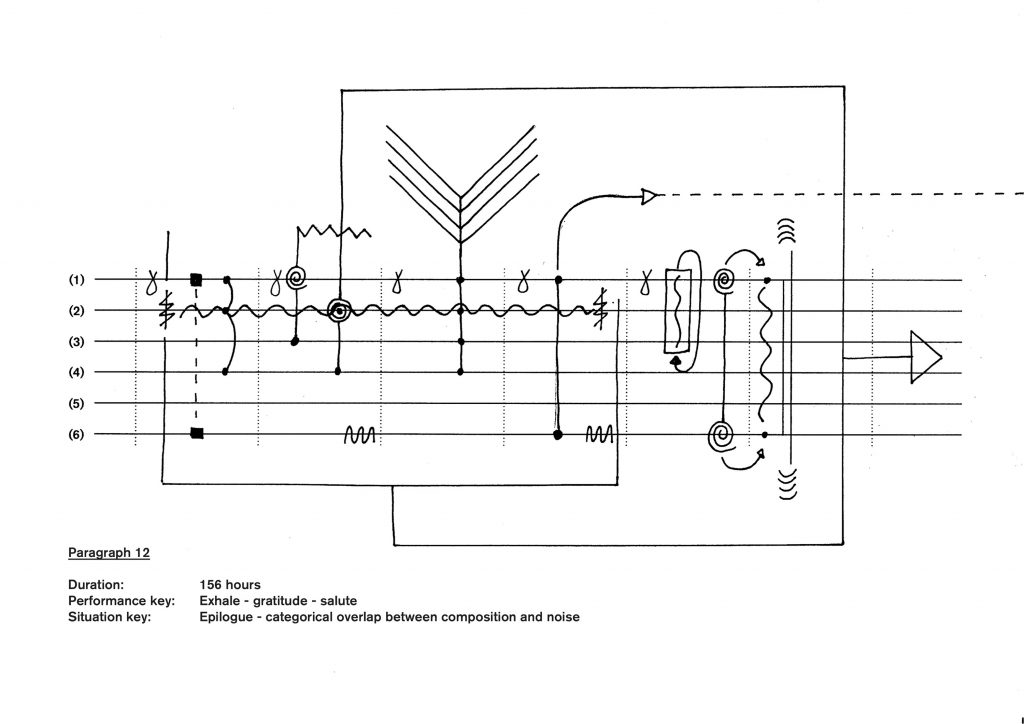 Paragraph 12, 2016, from “Teaching and learning as artistic practice: A manifesto for the LungA School
Paragraph 12, 2016, from “Teaching and learning as artistic practice: A manifesto for the LungA School
NOTES
’84’ is a creature that aims to make everything visible. It is, at its core, an aesthetic and ethical ambition, a world-opening and life-affirming ambition. It is also the form given to an attempt to live our way into some answers that cannot be found in any other way than by the passing of time, the unfolding of events and the thoughtful consideration and contemplation upon it all.
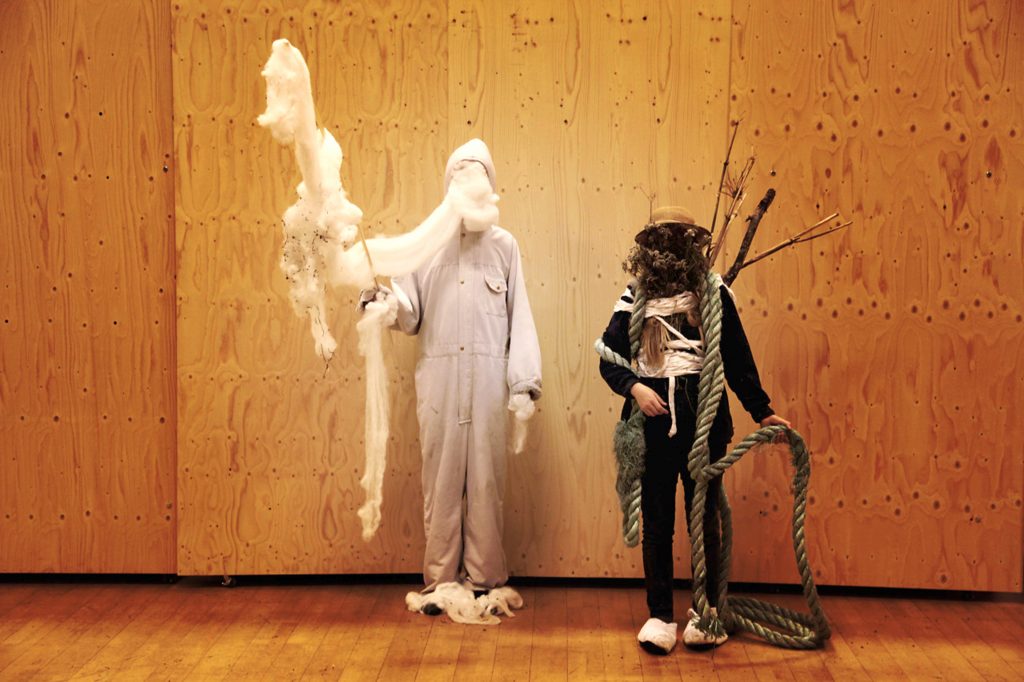
Untitled, 2016, image by Shan Turner-Carroll
Or rather: it is the form given to a way of living with the questions.
The project operates in a number of fields and on a number of levels regarding the kind of inquiries undertaken.
There is an ‘inside’ to the project which holds the topics that we find a lot of the conversations and experiments during the 84 days are about. The number of simultaneously ongoing projects and questions is a list of topics that is close to endless. However, the categories of topics could be formulated as this:
We are questioning while practicing the following:
- Our familiarity with a range of mediums, tools and ideas through the experimentation with these in our work.
- Our ability to navigate and act in settings and times characterized by uncertainty as well as the ability to act without fully knowing what will come of those actions.
- To open, unravel and discuss the lenses through which we understand, and act in, the world.
- Our applied understanding and the ability to practice good judgment in any given situation, knowing that this means an ongoing re-negotiation with the situation.
- A broadening of our conception of the kind of lives that we can choose to live and our pursuit of these. What are the innumerable purposes that can constitute a good reason for living and which are the innumerable ways in which such a life can take form?
- Our use of language, understood as our ability to live and interact with all material and immaterial aspects of our surroundings.
- Our ability to form meaningful relations and to engage in a community.
- Our ability to live artistically, to live fully and to live like it matters
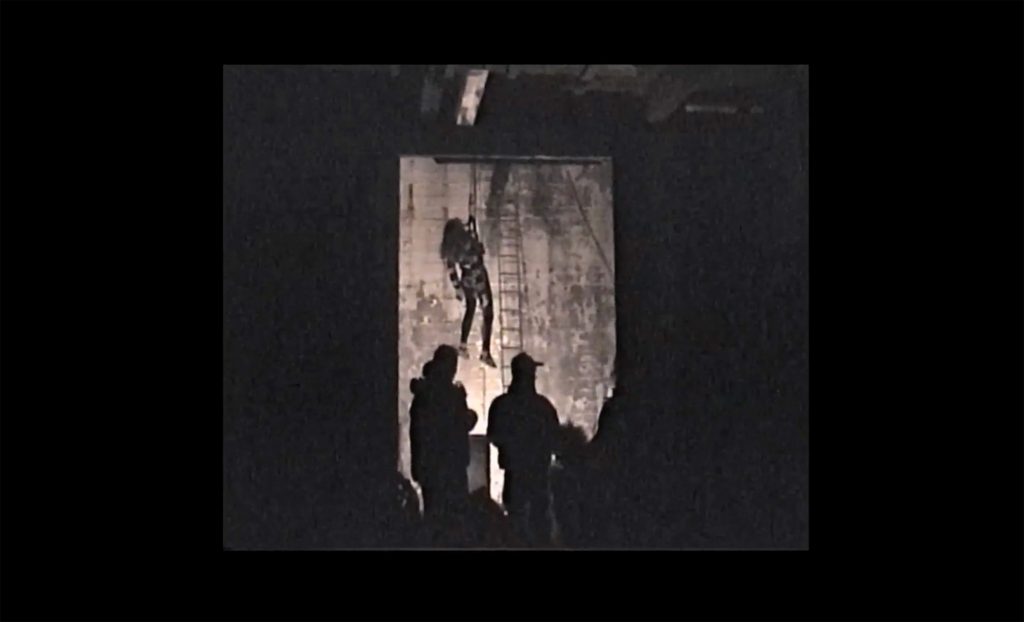 Untitled, 2016, still image from video “The Finale, Fall ‘16” by Austin Thomasson and Dæ Ja
Untitled, 2016, still image from video “The Finale, Fall ‘16” by Austin Thomasson and Dæ Ja
But underlying this is an effort that is central to the project and which ties threads through all the differences that are in each iteration of ‘84’.
A QUESTION OF ORGANIZATION
We can consider it an effort of pushing an idea of exploring fundamental organizing principles for human activities and it holds both the considerations that directly influence the decisions on the form of the particular performance as well as the considerations, beliefs and assumptions that make up the very foundation for how we perceive and interact with our surroundings on multiple levels.
Here we are engaged with creating new language and methods for what characterizes the responsibilities and relations, not only in a clearly stated educational setting, but also as elements of a more general social practice. Pedagogy is not tied to a situation of teaching, but becomes a name for how to practically operate social life in a way where collaborative praxis / praxis as ensemble is not tied to a particular temporal or physical space, but becomes organizing principle for human behavior.
The educational institution is far from the only, nor the most interesting, place for the creation and formulation of knowledge and we attempt to create language and forms that highlight the potential of all situations to inform understanding and praxis.
The ad-hocratic nature of our structure is also an attempt to experiment with a general question in relation to structure: When is something too much, making the situation rigid? And when is something not enough, making the situation dissolve? These are fairly basic question, nonetheless the answers are not straightforward.
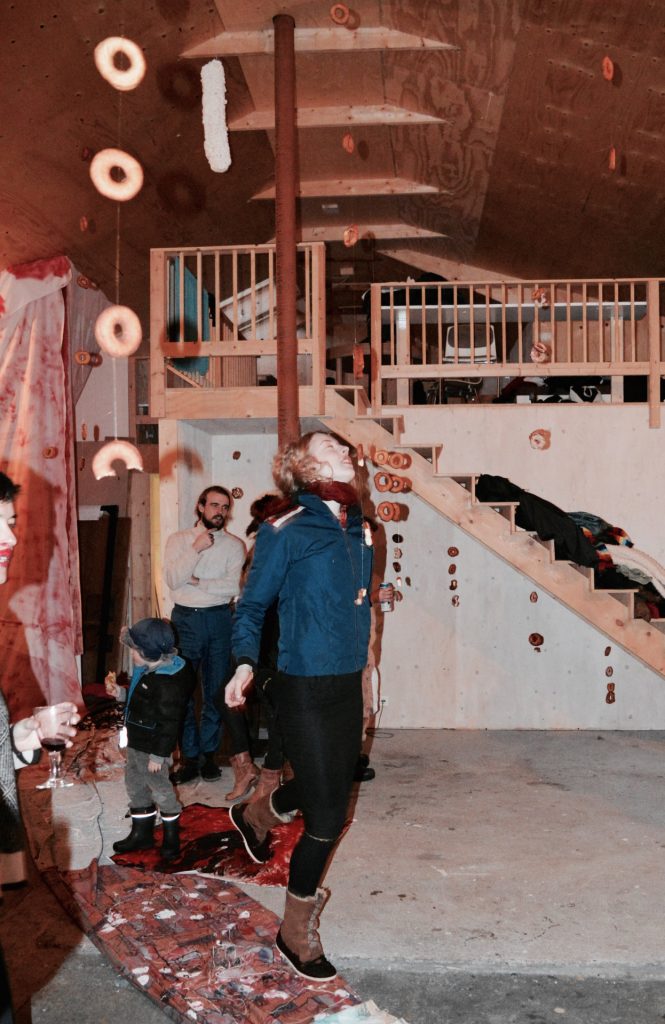
Untitled, 2016, photo from exhibition
A QUESTION OF BEING
In relation to this is also an ontological consideration of being.
(Does the school exist?)
The school, as collective identity emerging from the coming together of individuals that over time, with all their actions, words and thoughts move back and forth on the spectrum of reinforcing or dissolving the school as collective social identity. While at the same time, physical structures and spaces exist that play into this process of territorializing, of making the school exist, and ties this existence to a place.
Parts of this formation of identity is material, is tied to place, and people in this place, while another aspect of the existence has to do with an immaterial aspect of language and stories. The multiple languages developed in the manifesto, as well as the abstract nature of all material that finds it way beyond the mountains in both digital and analogue forms, plays into a process of one identity disrupting the other, thereby countering the process of territorializing and coding, not by specifically de-territorializing, but by territorializing somewhere else. If we understand territorializing literally, then through becoming we are also becoming more confusing in that we exist in multiple territories. Not over time, but at once. We are not one thing after the other, but all things at once, all the time.
A QUESTION OF KNOWLEDGE AND DARKNESS
When considering the kinds of knowledge (and questions) that derives from this situation where an entity emerges and is brought into existence, our attention goes into the investigation of all the elements of interactions that brings about the school. The school is not more or greater than the sum of all the material and immaterial parts that it consists of, but it is different from these and properties emerge that are particular to the school.
Perhaps this is an attempt to dissolve hierarchical differentiation between parts and wholes, and hold considerations of both at once, but If I say so, then I also have to say that it isn’t. The quality of the understanding that comes forth lies not in it’s relation to building systems of knowledge, but to constantly, relentlessly point to the not-knowing by insisting on a fluidity, sometimes through ambiguity, sometimes through negation, sometimes by affirmation, sometimes by being silent.
These are in some respects meta-considerations, but in each unfolding of ’84’ they become very particular as the experiments must be lived out, performed. And all of it lives both here (locally, poetically) as well as everywhere through tiny openings that allow us to be watched and heard. Radio waves and bits of data are sent out in all directions, available to be picked up by anyone.
Performing ‘84’ is in all respects a collaborative practice. The composition is made and performed to form a situation with tension and potential that takes everyone involved in surprising directions.
We are interested in addressing and developing understanding in relation to all of the above, but as an artistic experiment that calls itself a school we are naturally also simply concerned with how this understanding (and non-understanding) turns into our lives.
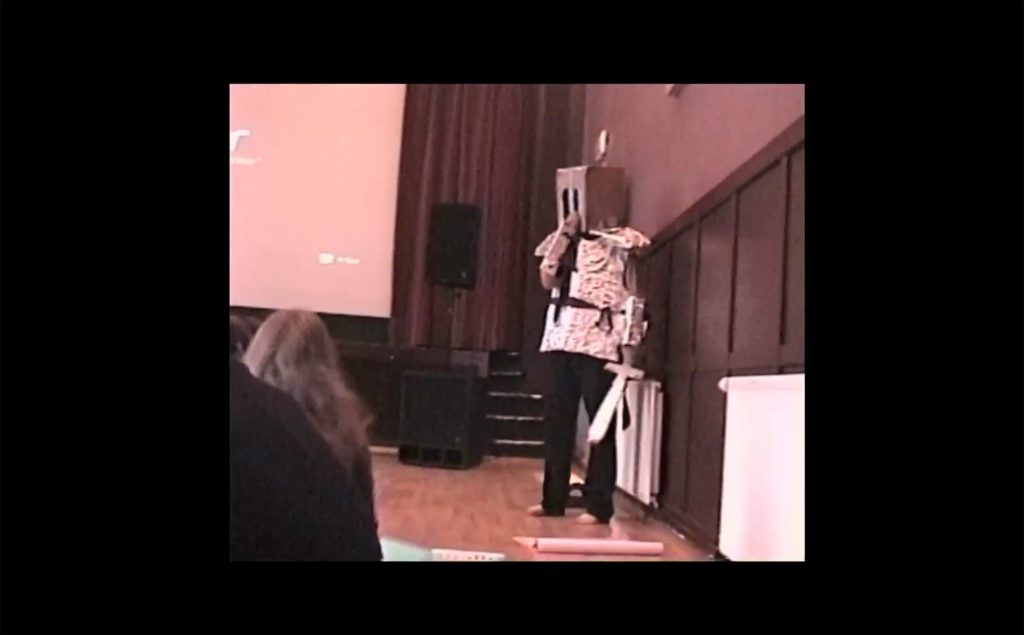
Untitled, 2016, still image from video “The Finale, Fall ‘16” by Austin Thomasson and Dæ Ja
The unfolding of events
Can be followed here:
INSTAGRAM : @lungaschool
FACEBOOK : facebook.com/LungA.School
VIDEO MATERIAL : http://vimeo.com/user35363969
PHOTOS : http://lungaschool.tumblr.com
RADIO BROADCASTS : http://soundcloud.com/user-56177927 AND http://mixlr.com/seydisfjordur-community-radio/
And more
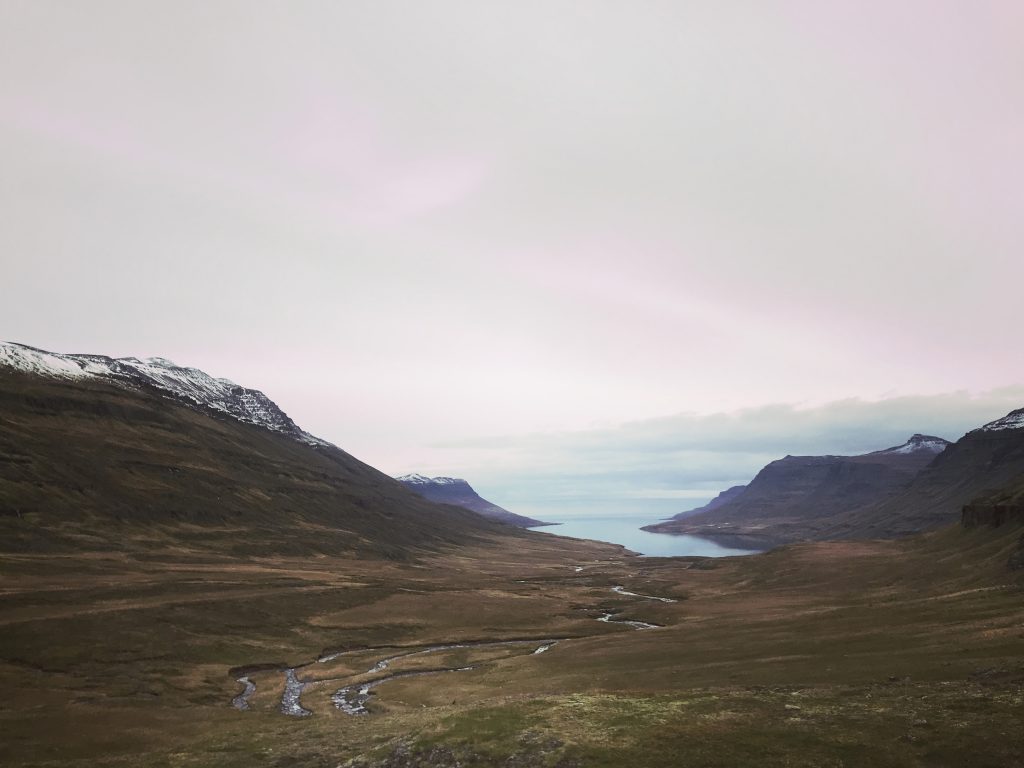
Untitled, 2017, photo by Amal Khan
AN INCOMPLETE LIST OF RELEVANT SOURCES
Relevant reading material
Friere, Paolo – Pedagogy of the oppressed
(originally published in 1968)
Illich, Ivan – Deschooling Society
Calder and Boyars, 1971
Illich, Ivan – The cultivation of Conspiracy
speech by Ivan Illich, Bremen, 1998
Madoff, Steven – ‘Art School (Propositions for the 21st century)’, (edited by Steven Henry Madoff)
MIT Press, 2009
Cage, John – Silence
Wesleyan University Press – 1961
Bishop, Claire – Artificial Hells (Participatory Art and the Politics of Spectatorship)
Versobooks, 2012
Filliou, Robert – Teaching and learning as performance arts
Gebr. Koeing, 1970
Weitz, Morris – The role of theory in Aesthetics
essay from ‘The Journal of Aesthetics and Art Criticism’, XV (1956) Anarchist Anthropology
Prickly Paradigm Press, 2004
Taggart, Andrew – How an Artist can hack a living
self-publisworks:
Copenhagen Free University (2001 – 2007) – http://www.copenhagenfreeuniversity.dk
Mountain School of Art (20s.org
Unitednationsplaza (by Anton Vidokle) (2006 – 2009) – http://www.unitednationsplaza.org
BAUHAUS (1919-1933) – httpof the Damned (2014 – ) – http://schoolofthedamned.tumblr.com
– ‘Having never written a note for Percussion’, James Tenney, 1971
– ‘Appearances’, Colleornelius Cardew, 1963-67




